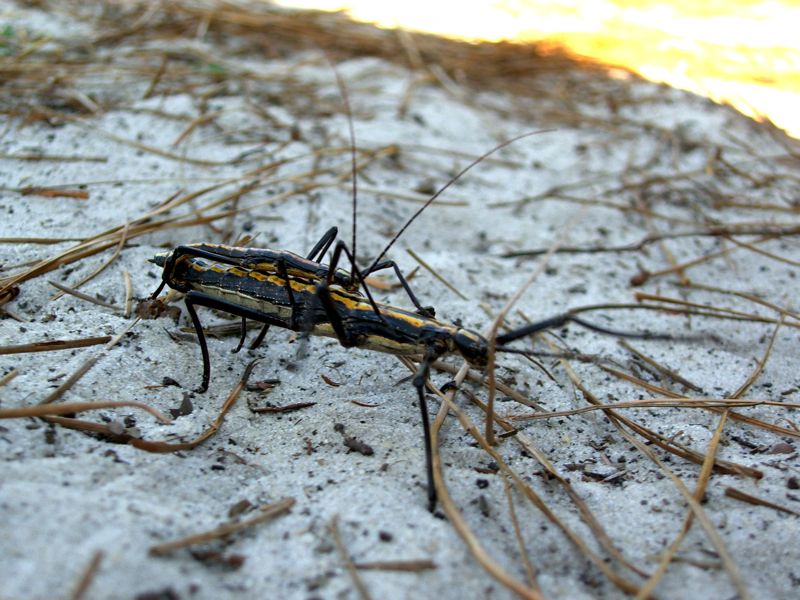Habitat

Anisomorpha buprestoides can be found in North America in the
southeastern region, however,
their exact boundary is not entirely known (Conle et al.
2009). Even though A. buprestoides can be easily
found in the previously stated southeastern states they are more
predominantly found in Florida (Conle et al. 2009).
Throughout Florida there are three different color and size
variations of A. buprestoides (Conle et al.
2009).
These color forms of A. buprestoides can be found in a variation of habitats; ranging from arid
and sandy to a more vegetative humid environment (Conle et
al. 2009). The three color variations are orange, white
and brown; all three do have the two iconic black stripes that
help identify their species (Conle et al.
2009). The two-striped walking sticks that are found in the
arid/sandy locations are always orange and white (Conle
et al. 2009). The brown A. buprestoides has
never been found in the same habitat as the orange and white
two-striped walking stick (Conle et al. 2009).
Living in a more vegetative environment is
not the only difference the brown A. buprestoides has
in comparison to the orange and white varieties; the brown
two-striped walking stick has a habit of coming out from hiding
during the evening (Conle et al. 2009).
Throughout Florida there seems to be a large variation of
coloration in the A. buprestoides (Conle et al.
2009). The southern two-striped walking stick colorations
appear to be related to camouflaging the arthropod (Conle et
al. 2009). Other than the coloration the A.
buprestoides appears to be very adaptable to its
environment (Conle et al. 2009) in the southeastern
region of the United States (Conle et al. 2009; Littig
1942; Dossey et al. 2008). Regardless of nocturnal
activities and color, A. buprestoides has the same
appetite where ever it can be found (Conle et al.
2009).

A. buprestoides is a herbivore (Gunning 1987) and can more commonly
be found eating various oaks (Conle et al. 2009). In
addition to oaks our “devil rider” has been found munching on several
forms of willows in congruence with rosemary, staggerbush, tree
lyonia, sweet gum, sand heath and other various leafy plants (Conle
et al. 2009). Strangely enough A. buprestoides can
be found resting on the long leaves of the saw palmetto and/or hiding
away under the dead bark of trees typically
pine; neither of these plants appear to be a part of their dietary
regimen (Conle et al. 2009).